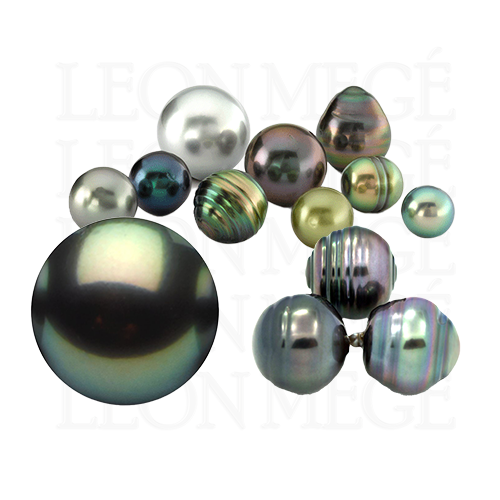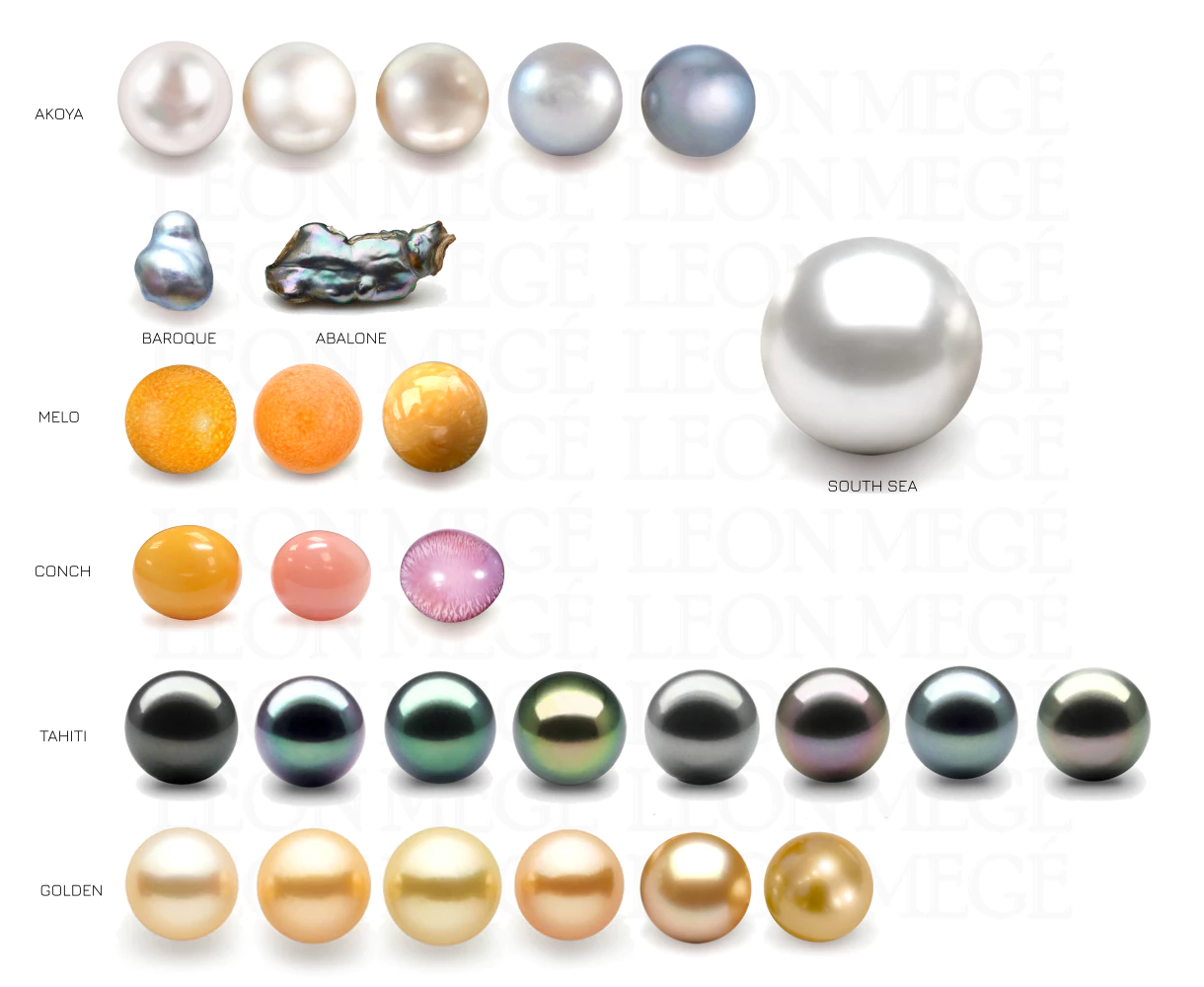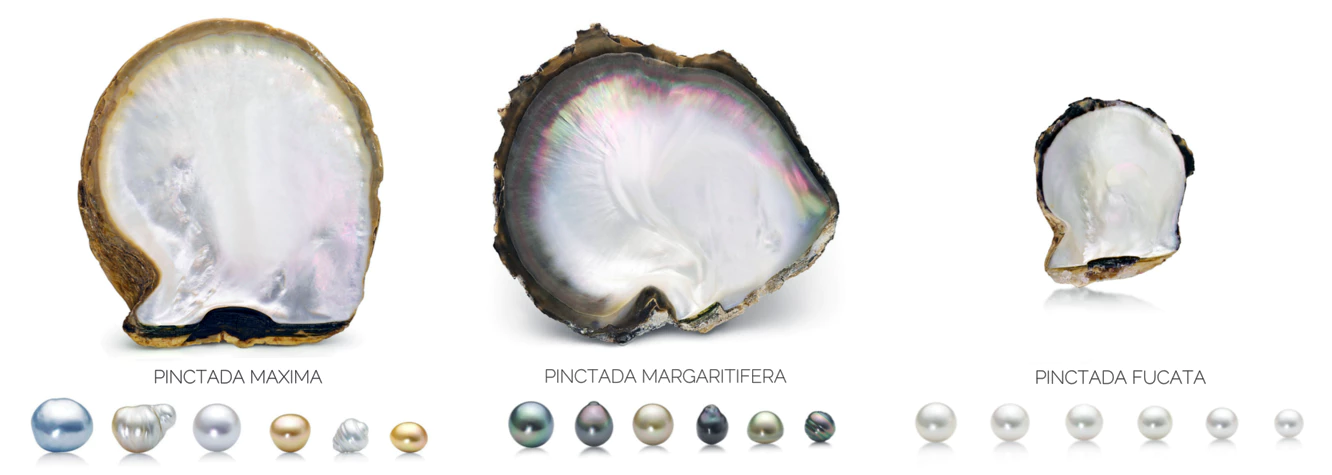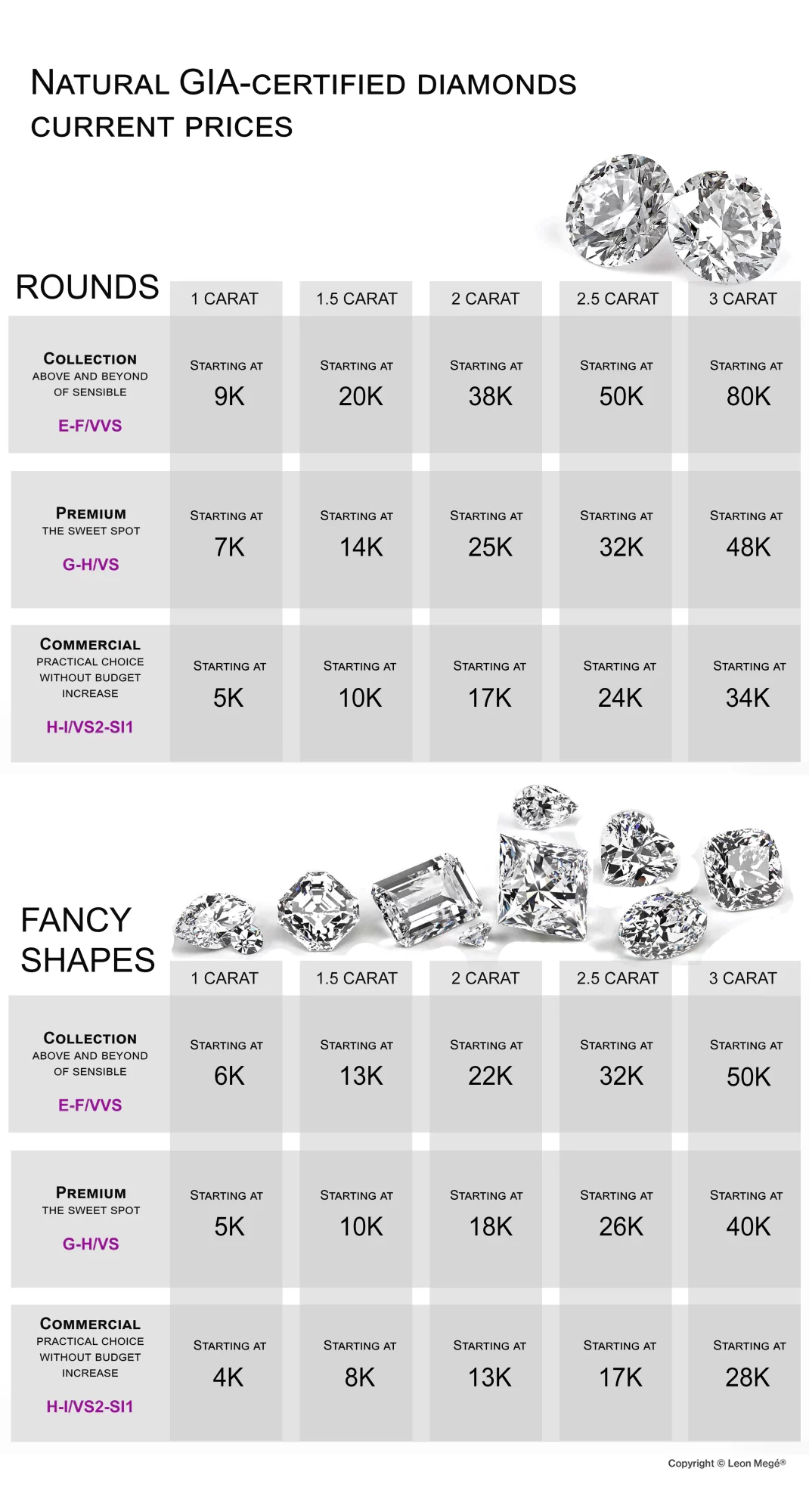The pearls are gems grown within the soft tissue of an oyster around a microscopic irritant such as a grain of sand that found its way inside the shell. There are two types of pearls identical in composition and appearance and different only in how they were conceived – natural and cultured.
Natural pearls are seeded naturally, while cultured pearls are acquired through farming and harvesting processes where the mollusk is seeded by humans. In both cases, the mollusk coats the irritant with layers of inorganic deposits called nacre, creating a pearl. Natural pearls are scarce and expensive. The vast majority of the pearls available on the market today are cultured.
Saltwater pearls come in three main varieties. They generally have a better quality than freshwater pearls, reflected in their higher demand and price. The most common varieties include Akoya, South Sea, and Tahitian pearls. Before the Japanese started cultivating Akoya in the early 20th century, pearls were rare and expensive. Today Akoya is the most abundant variety of saltwater pearls.

Pearls’ diameters are measured in millimeters. The larger the pearl, the more valuable they are. Seed pearls can be smaller than one millimeter, while South Sea pearls can grow over 20 millimeters.
Akoya
With their perfectly spherical shape and high luster, Akoya pearls are formed by small Pinctada fucata oysters, also known as Akoya oysters. They come from waters surrounding Japan, China, Korea, and Vietnam. Each oyster can produce only one or two pearls at a time, and the limited production increases its value. Akoya pearls come in many colors other than white, but the most valuable are traditional whites with overtones of rose, silver, or cream.


South Sea
South Sea pearls are the most sought-after variety of pearl types cultivated in Australia, the Philippines, Myanmar, and Indonesia. They grow inside the Pinctada maxima oysters, the world’s largest pearl oysters. The South Sea pearl color palette consists of white and golden hues with pink, green, and blue overtones. South Sea pearls can grow up to 22 millimeters in diameter and are highly prized for their satin-like luster, elegant appearance, and size.
Tahitian
Tahitian pearls come exclusively from Tahiti and other French Polynesian islands and are the most sought-after naturally dark gems. They are produced by the black-lipped Pinctada margaritifera oyster, which doesn’t live anywhere else. Tahitian pearls are black, dark grey, charcoal, peacock green, and aubergine colors with silver, lavender, and blue overtones. They can grow as large as 21 millimeters. However, less than 10% of the harvest qualifies for export because a true Tahitian pearl should have a nacre at least 0.8-millimeter thick according to the internationally accepted quality standards. Queen Elizabeth I was known to covet Tahitian pearls.


Abalone
Melo and Conch pearls
The jumbo-sized Southeast Asian Melo sea snail, also known as the Indian volute, makes the yellow-orange pearl prized for its flame-like pattern and smooth, porcelain-like luster. Melo pearls are made of calcite and intertwined crystals of aragonite, and they are harder than traditional pearls, ranking five on the Mohs scale. The Melo pearls are one of the rarest in the world; the rich golden-orange are the most valuable, although their vivid color can fade in reaction to sunlight. Conch are exceptionally rare pink pearls made of a porcelaneous (non-nacreous) material.


Golden pearls
Natural Golden South Sea pearls ranging from pale champagne to rich 24-karat gold color come from the tropical lagoons of Australia, Indonesia, and the Philippines. They are produced by the “gold-lip” South Sea oyster and are valued for their warm, regal tones. Sometimes white pearls are dyed to imitate the naturally occurring golden color. The dyed pearls are less valuable.
Giant pearls
The natural blister pearls are occasionally formed in a giant clam – Tridacna gigas, in the salt waters of the South Pacific. The illustrated specimen is approximately 16 x 35 inches, weighing eleven kg. Giant pearls of this size are extremely rare and cost millions to collectors. For jewelry lovers, they are quite useless, and we feel sorry for the clam that lost its life.


Léonard Rosenthal - The Pearl King
Léonard Rosenthal was a French trader-adventurer who cornered the market in 1906 when the British, historically dominating the pearl trade, were distracted by the financial crisis back home. Léonard organized caravans of donkeys loaded with sacks of pennies to pearl fishing villages to be exchanged for the pearls. He succeeded in taking over the market by delivering the precious cargo to dealers in Paris, which, during the World War, became the world center of the pearl trade. In his heyday, Leonard employed 100 pearl stringers producing 100 necklaces daily.
Cultured Pearl Revolution
The Japanese entrepreneur Kokichi Mikimoto’s 1899 invention destroyed the rare natural pearl market. By introducing a nucleus into the oyster, around which it secreted mother of pearl, he grew perfectly round pearls, often much larger than natural ones. Mikimoto presented cultured pearls at the 1925 Universal Exhibition, sending shockwaves through the pearl trade. Laboratoire Français de Gemmologie and the Gemological Institute of America were tasked with separating cultured and natural pearls, which they succeeded with the help of X-ray machines. The 1929 crash, years of overfishing, and the rise of a diamond engagement ring contributed to the natural pearls’ demise.

The pearl’s composition is a material called nacre consisting of aragonite (calcium carbonate), and conchiolin, a complex protein forming mollusk shells. It is strong, resilient, and iridescent.
The highest quality Akoya pearls originating from Japan are called Hanadama Akoya, “flower pearls” in Japanese. Akoya pearls have highly desirable white, grey, cream, and blue body color with silver, pink and green overtones ranging from two to ten millimeters. They are commonly perfectly round in shape, although irregular-shaped Akoya pearls can also be found.
South Sea pearls are the most sought-after variety, often called the Queen of Pearls. The high failure rate during the cultivation process makes South Sea pearls one of the most valuable on the market. The perfectly spherical specimens without dents and blemishes are rare and command very high prices.
- Wrinkles result from uneven growth of the nacre due to odd-shaped seeds
- Spots are slight color variations
- Abrasions are scratches or scuffs that impact the luster of the pearl.
- Dents, divots, and pits are various indentations in the nacre.
- Mottling and bulleting is a pattern on the surface created inside the oyster. It can be desirable because it indicates a thick layer of nacre.
- Kobs and tips are growth marks.
- Circles are a growth pattern that imparts a unique look and is not considered a blemish.
There are several different systems for pearl rating. The characteristics affecting pearl’s grade are:
- Luster: Bright, highly reflective pearls get the higher rating
- Blemishes: They are evaluated by size, type, number, and location
- Nacre thickness: The thicker the nacre, the higher the value
- Color: White and grey-white are the most valuable
- Size: Larger is typically more valuable
- Shape: Roundness and symmetry are prized
- Match: a uniform arrangement in a string of shape, color, luster, spotting, and graduation.
THE AAA-A SYSTEM
This grading system ranks pearls from AAA to A, with AAA being the highest.
- AAA: Nearly flawless pearls with a high luster and a surface that’s 95 percent free of defects
- AA: High luster with a surface that’s 75 percent free of defects
- A: Lower luster and defects on more than 25 percent of the surface.
THE A-D SYSTEM, OR TAHITIAN SYSTEM
The A is the highest grade, and the D is the lowest. The A-D system is based on a French Polynesian government standard.
- A: Very high luster, and only 10% of the surface or less has defects
- B: High to medium luster and less than 30% or less of the surface is defective
- C: Medium luster and 60% of the surface or less is defective
- D: The lowest rating. Luster is not evaluated; only surface defects are.



